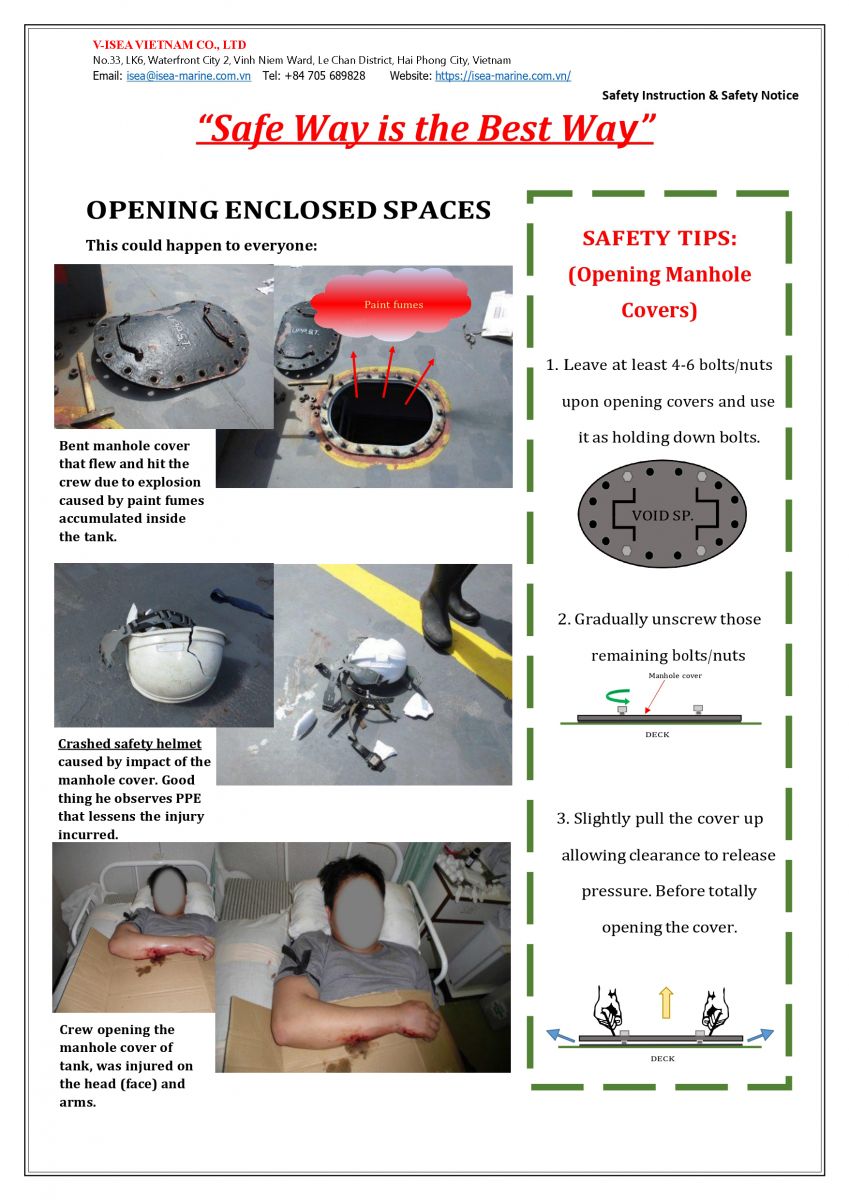Opening and Entering Enclosed Spaces
By Capt. Huy / V-Isea Vietnam Co., Ltd - Steer Your Dream
An enclosed space is a space that is not used for day to day activity and which has any of the following characteristics:
1. Limited opening for entry and exit
2. Inadequate ventilation
3. Is not designed for continuous worker occupancy
The presence of any one of the characteristics as stated above can make space an enclosed space. A ship-specific list should be available to identify all enclosed spaces on board and should be displayed in public spaces. The most common confined spaces onboard ships are cargo holds, chain lockers, cofferdams, water tanks, void spaces, duct keels, fuel tanks, engine crankcases, exhaust, and scavenge receivers.
It is best practice not to enter a dangerous space, however, onboard crew members have to enter enclosed spaces for a number of reasons including routine inspection of tanks (ballast tanks, DB tanks), checking if a tank is dry before loading, cleaning of tanks or holds, maintenance including painting, repairing, etc.
Dangers and hazards associated with enclosed spaces can be
1. Lack of oxygen – the acceptable range of oxygen in an enclosed space is between 19.5% to 23.55. Oxygen in any compartment can reduce due to many factors- rusting of steel parts is the most common one. We all know that rusting is nothing but the process of oxidation-thus oxygen is consumed. Oxygen can also be consumed by activities like hot work, welding, or the occurrence of fire.
2. Hazardous vapors– The presence of toxic vapors can make space deadly even if there is no lack of oxygen or the compartment is oxygen-enriched. A person may suffer from eye irritation, headache, or even become unconscious if he/she inhales toxic gases. A higher concentration of toxic gases can also cause death.
3. Leakage of hazardous materials from adjacent spaces.
4. Insufficient/no ventilation – there could be high chances of the presence of toxic gases or absence of oxygen, both cases being lethal for man entry.
5. Restricted space– restricted or limited space in any compartment can make rescue attempts from such chambers difficult and challenging. Personnel should understand the layout of an enclosed space before attempting entry.
6. Inadequate lighting.
7. Personal injury due to slips, trips, and falls.
Because of zero ventilation, these enclosed places generate and store toxic gases which are either produced from chemicals stored in the place or leakage from pipelines. If a person enters such a place without taking precautions, he or she may suffer unconsciousness and sometimes even death.
All crew need to be aware of enclosed space entering procedure and follow closely, taking into all matters may lead to injuries to crew and find prevention matter by well preparation.














